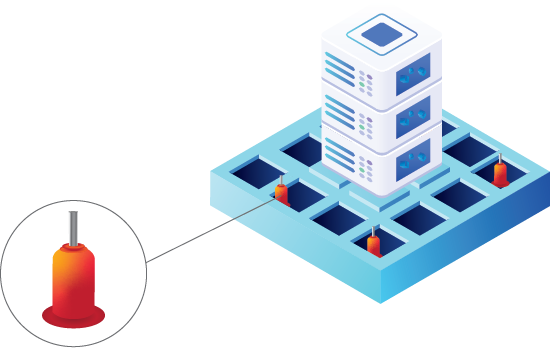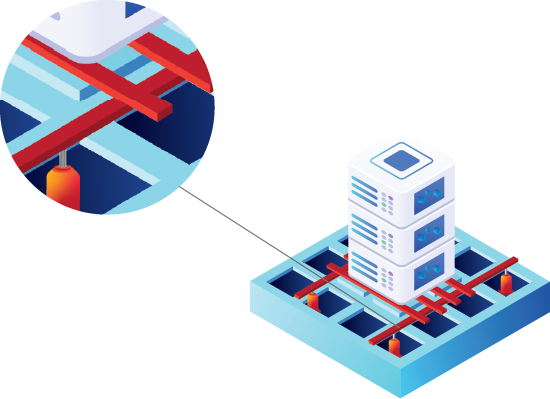Stay live throughout the entire replacement process
Live Lift is our proprietary service that allows you to replace raised access floor systems without shutting down your server operation. We understand that critical facilities can’t afford to have any downtime, even when it’s time to replace a raised floor. With Live Lift, our team uses our proprietary system to lift one or more server racks or cabinets simultaneously in order to replace the raised flooring tiles underneath them.
What Is Raised Flooring?
Raised flooring is a type of flooring system where the floor is constructed with a hollow space beneath it. This space is usually used to provide access to wiring, piping, and airflow. The raised platform also allows for greater air circulation, which is beneficial for computer rooms and other electronic equipment.
How it works
Here’s the process for replacing or repairing your raised floor without shutting down your operation.

1. We remove the floor tiles
surrounding the server racks.

2. Proprietary support system is
placed on the subfloor.

3. We place our mounting system
under the cabinet.

4. Our proprietary system raises the
server rack in unison.

5. We remove the old tiles and add the new ones while the cabinet is lifted.

